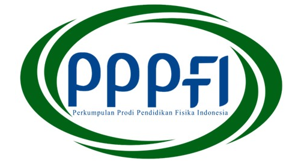KOEFISIEN RESTITUSI: MAKNA FISIS, FORMULA MATEMATIS, DAN REDUKSI DIDAKTIS
DOI:
https://doi.org/10.15575/jotalp.v2i1.5817Keywords:
The coefficient of restitution, physical meaning, mathematical formulas, Didactic reductionAbstract
References
Abdullah, Mikrajudin. 2016. Fisika Dasar I. Bandung: ITB
Anonim. 2009. Aktif Belajar Fisika untuk SMA & MA Kelas XI. Jakarta: Pusat Perbukuan Departemen Pendidikan Nasional
Bueche, Frederick & Hect, Eugene. Fisika Universitas Edisi Kesepuluh. Jakarta: Erlangga (2006)
Creswell, Jhon. 2015. Educational Reseach, Planning, Conducting, and Evaluating Quantitative and Qualitative, ed.5. Pearson Education Inc
Dirgantara, Yudi & Nasrudin, Dindin. 2016. Rancangan Pembelajaran Semester Pendalaman Fisika Sekolah Lanjutan II. UIN Sunan Gunung Djati Bandung
Dudung A.S. 2008. Mengerti Fisika SMA/MA. Bandung: Yrama Widya
Fraenkel, J. R & Wallen N.E. 2009. “How To Design and Evaluate Reseach in Education Sevent Edition, New York: McGraw-Hill
Handayani, Sri & Damari, Ari. 2009. Fisika untuk SMA dan MA Kelas XI. Jakarta: Pusat Perbukuan Departemen Pendidikan Nasional.
Haryadi, Bambang. 2009. Fisika untuk SMA/MA Kelas XI. Jakarta: Pusat Perbukuan Departemen Pendidikan Nasional
Herlanti, Yanti dkk. 2008. Strategi Pengolahan Bahan Ajar IPA (Hasil Kajian Terhadap Teori Reduksi Didaktis dan Pedagogi Materi Subyek) Edusains 1(1), Juni 2008 ISSN 1979-7281. Halaman 26-38
Indrajit, Dudi. 2009. Mudah dan Aktif Belajar Fisika untuk Kelas XI Sekolah Menengah Atas/Madrasah Aliyah Program Ilmu Pengetahuan Alam. Jakarta: Pusat Perbukuan Departemen Pendidikan Nasional
Kanginan, Marthen. 2013. Fisika untuk SMA/MA Kelas XI Kelompok Peminatan Matematika dan Ilmu Alam. Jakarta: Erlangga
Lampiran Permendikbud RI Nomor 24 Tahun 2016 tentang Kompetensi Inti dan Kompetensi Dasar Pelajaran pada Kurikulum 2013 pada Pendidikan Dasar dan Pendidikan Menengah
Palupi, Dwi Satya dkk. 2009. Fisika untuk SMA dan MA Kelas XI. Jakarta: Pusat Perbukuan Departemen Pendidikan Nasional
Permendikbud RI Nomor 24 Tahun 2016 tentang Kompetensi Inti dan Kompetensi Dasar Pelajaran pada Kurikulum 2013 pada Pendidikan Dasar dan Pendidikan Menengah
Rufaida, SA dkk. Profil Kesalahan Siswa SMA dalam Pengerjaan Soal pada Materi Momentum dan Impuls. Pendidikan Fisika FKIP UNS
Saeful Anwar. 1994, Bahan Kuliah Pengolahan Bahan Ajar. Makalah Kuliah Bandung: PPS UPI
Saripudin, Aip dkk. 2009. Fisika untuk Kelas XI Sekolah Menengah Atas/ Madrasah Aliyah Program Ilmu Pengetahuan Alam. Jakarta: Pusat Perbukuan Departemen Pendidikan Nasional
Setiawan, Hilman. Fisika SMA/MA Kelas XI 2A. Jakarta: Piranti (2005)
Sarwono dkk. 2009. SMA dan MA Fisika 2 Mudah dan Sederhana. Jakarta: Pusat Perbukuan Departemen Pendidikan Nasional
Siswanto & Sukaryadi. 2009. Kompetensi Fisika untuk SMA/MA Kelas XI. Jakarta: Pusat Perbukuan Departemen Pendidikan Nasional
Supiyanto. 2006. Fisika untuk SMA Kelas XI. Jakarta: Phibeta
Tipler, Paul. 1998. Fisika untuk Sains dan Teknik Jilid 1. Jakarta: Erlangga
Wulandari, Yayan. 2012. 1001 Ulasan Fisika SMA untuk Kelas XI. Tanggerang: Scientific Press
Downloads
Published
Issue
Section
Citation Check
License
Journal of Teaching and Learning Physics is licensed under a Creative Commons Attribution-NonCommercial-NoDerivatives 4.0 International License








